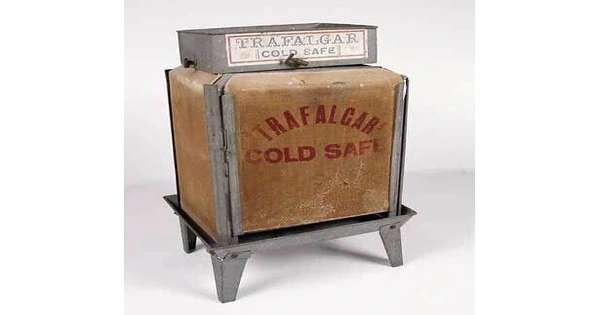The Coolgardie Safe was a sort of refrigeration equipment used in the late nineteenth and early twentieth century, especially in hot climates such as Australia. It is a low-tech food storage facility that uses evaporative cooling to extend the life of whatever food is stored in it. It uses the basic idea of heat transfer that occurs during water evaporation. It was named for the town where it was invented, Coolgardie, Western Australia, near Kalgoorlie-Boulder. It was invented by Arthur Patrick McCormick and named after the town of Coolgardie in Western Australia, where it gained popularity during the gold rush.
The Coolgardie safe operates on the principle of evaporative cooling. It consists of a wooden or metal frame covered with hessian or a similar porous material. The safe is kept moist by regularly wetting the covering material with water. As the water evaporates, it draws heat from the interior of the safe, cooling its contents.
The Coolgardie Safe consists of a wooden or metal frame with hessian or other porous material covering it. The device relies on the principle of evaporative cooling to keep its contents cool. Water is poured onto the covering material, and as it evaporates, it draws heat from the interior of the safe, effectively cooling its contents.
Applications
The Coolgardie Safe was commonly used to store perishable food items such as meat, fruits, and vegetables in the absence of modern refrigeration methods. It provided a simple and relatively effective means of preserving food in areas where access to ice or electricity was limited.
While the Coolgardie Safe is no longer widely used due to the availability of more advanced refrigeration technologies, it stands as an interesting historical example of ingenuity in addressing the challenges of preserving food in hot climates.
















